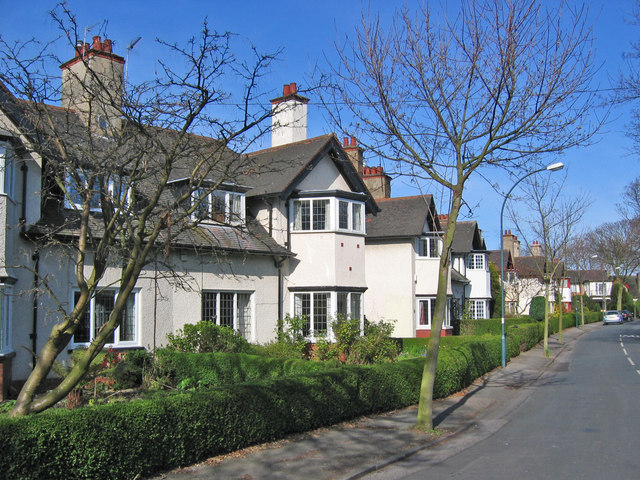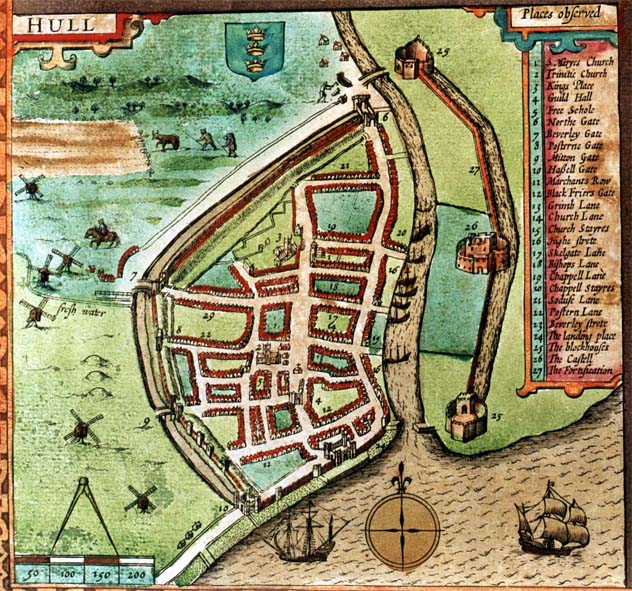|
Drypool
Drypool (''archaic'' DripoleAlso Dritpole, Dritpol, Dripold, Dripol, Dridpol) is an area within the city of Kingston upon Hull, England. Historically Drypool was a village, manor and later parish on the east bank of the River Hull near the confluence of the Humber Estuary and River Hull; it is now part of the greater urban area of Kingston upon Hull, and gives its name to a local government ward. Modern Drypool ward is a mixture of light industrial developments and housing, mainly terraced, as well as the post 1980s housing development 'Victoria Dock Village' built on the infilled site of the former Victoria Dock. The area also includes 'The Deep' aquarium, several schools, and a swimming baths. Geography Drypool ward The local government ward of Drypool (2001) has its north-east border formed by Laburnum Avenue and Chamberlain Road, south-west of East Park, and its western border former by the River Hull, and its eastern border former by New Bridge Road, and the eastern l ... [...More Info...] [...Related Items...] OR: [Wikipedia] [Google] [Baidu] |
Southcoates
Southcoates is an urban area in the eastern part of Kingston upon Hull, England. A named habitation at Southcoates dates to at least the 11th century,Archaic: Sotecote (11th century), Sottecotes (13th century), Sutkotes (14th century), Sudcotes (16th century) during the medieval period the place was a small hamlet, associated with Drypool. The urban growth of Hull expanded over Southcoates in the late 19th and early 20th century, and the place subsequently gave its name to council wards. The area of Southcoates centred on the former village is predominantly urban housing. The southern part of the Southcoates area is adjacent to the Humber Estuary, and was originally wetlands; a large amount of land was reclaimed southwards on the foreshore during the construction of the Alexandra Dock in the 1880s; this land and adjacent areas are in predominantly industrial and dock use. Geography Southcoates is an urban area of Kingston upon Hull. The north-wes ... [...More Info...] [...Related Items...] OR: [Wikipedia] [Google] [Baidu] |
River Hull
The River Hull is a navigable river in the East Riding of Yorkshire in Northern England. It rises from a series of springs to the west of Driffield, and enters the Humber Estuary at Kingston upon Hull. Following a period when the Archbishops of York charged tolls for its use, it became a free navigation. The upper reaches became part of the Driffield Navigation from 1770, after which they were again subject to tolls, and the section within the city of Hull came under the jurisdiction of the Port of Hull, with the same result. Most of its course is through low-lying land that is at or just above sea level, and regular flooding has been a long-standing problem along the waterway. Drainage schemes to alleviate it were constructed on both sides of the river. The Holderness Drainage scheme to the east was completed in 1772, with a second phase in 1805, and the Beverley and Barmston Drain to the west was completed in 1810. Since 1980, the mouth of the river has been protected by a tid ... [...More Info...] [...Related Items...] OR: [Wikipedia] [Google] [Baidu] |
Victoria Dock, Hull
The Port of Hull is a port at the confluence of the River Hull and the Humber Estuary in Kingston upon Hull, in the East Riding of Yorkshire, England. Seaborne trade at the port can be traced to at least the 13th century, originally conducted mainly at the outfall of the River Hull, known as The Haven, or later as the Old Harbour. In 1773, the Hull Dock Company was formed and Hull's first dock built on land formerly occupied by Hull town walls. In the next half century a ring of docks was built around the Old Town on the site of the former fortifications, known as the Town Docks. The first was The Dock (1778), (or The Old Dock, known as Queen's Dock after 1855), followed by Humber Dock (1809) and Junction Dock (1829). An extension, Railway Dock (1846), was opened to serve the newly built Hull and Selby Railway. The first dock east of the river, Victoria Dock, opened in 1850. Docks along the banks of the Humber to the west were begun in 1862 with the construction of the W ... [...More Info...] [...Related Items...] OR: [Wikipedia] [Google] [Baidu] |
Kingston Upon Hull East (UK Parliament Constituency)
Kingston upon Hull East is a borough constituency for the House of Commons of the Parliament of the United Kingdom. It elects one Member of Parliament (MP) at least once every five years by the first-past-the-post electoral system. The constituency has been represented by Karl Turner of the Labour Party since the 2010 general election. Boundaries 1885–1918: The Municipal Borough of Hull wards of Alexandra, Beverley, Drypool, Sutton, and part of Central. 1918–1950: The County Borough of Hull wards of Alexandra, Drypool, and Southcoates. 1950–1955: The County Borough of Hull wards of Alexandra, Drypool, Marfleet, Southcoates, Stoneferry, and Sutton. 1955–1974: The County Borough of Hull wards of Alexandra, Drypool, East Central, Marfleet, Myton, Southcoates, Stoneferry, and Sutton. 1974–1983: The County Borough of Hull wards of Bransholme, Drypool, Greatfield, Holderness, Longhill, Marfleet, Stoneferry, and Sutton. 1983–2010: The City of Hull wards of Drypool, ... [...More Info...] [...Related Items...] OR: [Wikipedia] [Google] [Baidu] |
Marfleet
Marfleet is an area of Kingston upon Hull, East Riding of Yorkshire, England, in the east of the city, near King George Dock. Marfleet was until the late 20th century a small village outside the urban area of Hull – developments including the Hull and Holderness Turnpike (1833), the Hull and Holderness Railway (1854) and the King George Dock (1914), as well as establishments of factories in the area from the late 19th century onwards (notably one by H. H. Fenner & Co., ) caused the development of the area into an industrial suburb. Parts of the former village, including the church still exist, isolated within the predominately industrial landscape. Geography Modern Marfleet is an area within the built up area of Kingston upon Hull on the eastern side of the River Hull – it consists of remnants of the former village, including the historic church, surrounded mainly by industrial buildings and port-side warehousing. Approximate boundaries can be represented ... [...More Info...] [...Related Items...] OR: [Wikipedia] [Google] [Baidu] |
The Garden Village, Kingston Upon Hull
The Garden Village is an area of model village housing built in the early 1900s, in the Summergangs area of Kingston upon Hull, England, for the workers of Reckitt & Sons. History and description The village was built on of land by the 'Hull Garden Village Co.', a company with £200,000 of capital of which two-thirds was contributed by Sir James Reckitt, and with two-thirds of the housing reserved for his workers. The company's dividends were limited to 3%. The estate opened in 1908, its design was influenced by the ideas of the Garden city movement. The design was by architects Percy Runton and William Barry. By 1913, 600 houses had been built in five sizes and with twelve different styles, generally with a short front garden and long back garden, often accessed by a 'ten-foot' alley, a low housing density, built of brick often pebble dashed, (some houses received a white ''Medusa Portland cement'' render) with steeply pitched roofs with overhanging eaves, recessed doorways ... [...More Info...] [...Related Items...] OR: [Wikipedia] [Google] [Baidu] |
Holderness House
Summergangs (archaic ''Somergang'') is a suburb of Kingston upon Hull, near the A165 road, in the East Riding of Yorkshire, England. The area contains the model village development known as The Garden Village and East Park. History 'Somergang' is referred to in the early 14th century as common pasture land, and to a cross in Somergang during the same period, also as a pasture called ''Suttecotes Som'gang'' (or ''Suttecotessomergang''). The drainage canal known as the 'Somergangs Dike' originates to a 13th-century ditch created by Saer de Sutton, this ditch formed the boundary with Sutton to the north. The name may derive from the indo-European word "gang/geng" meaning a road or way plus "summer", referring to a road which was only usable in summer, or from "South" + "Mer" ( Mere). The etymologies refer to the wetness of the (low lying) land and to the use of the land during the (drier) summer months. The fields in Summergangs were enclosed in 1748, a large residence with grou ... [...More Info...] [...Related Items...] OR: [Wikipedia] [Google] [Baidu] |
Kingston Upon Hull
Kingston upon Hull, usually abbreviated to Hull, is a port city and unitary authority in the East Riding of Yorkshire, England. It lies upon the River Hull at its confluence with the Humber Estuary, inland from the North Sea and south-east of York, the historic county town. With a population of (), it is the fourth-largest city in the Yorkshire and the Humber region after Leeds, Sheffield and Bradford. The town of Wyke on Hull was founded late in the 12th century by the monks of Meaux Abbey as a port from which to export their wool. Renamed ''Kings-town upon Hull'' in 1299, Hull had been a market town, military supply port, trading centre, fishing and whaling centre and industrial metropolis. Hull was an early theatre of battle in the English Civil Wars. Its 18th-century Member of Parliament, William Wilberforce, took a prominent part in the abolition of the slave trade in Britain. More than 95% of the city was damaged or destroyed in the blitz and suffered a perio ... [...More Info...] [...Related Items...] OR: [Wikipedia] [Google] [Baidu] |
Summergangs
Summergangs (archaic ''Somergang'') is a suburb of Kingston upon Hull, near the A165 road, in the East Riding of Yorkshire, England. The area contains the model village development known as The Garden Village and East Park. History 'Somergang' is referred to in the early 14th century as common pasture land, and to a cross in Somergang during the same period, also as a pasture called ''Suttecotes Som'gang'' (or ''Suttecotessomergang''). The drainage canal known as the 'Somergangs Dike' originates to a 13th-century ditch created by Saer de Sutton, this ditch formed the boundary with Sutton to the north. The name may derive from the indo-European word "gang/geng" meaning a road or way plus "summer", referring to a road which was only usable in summer, or from "South" + "Mer" (Mere). The etymologies refer to the wetness of the (low lying) land and to the use of the land during the (drier) summer months. The fields in Summergangs were enclosed in 1748, a large residence with groun ... [...More Info...] [...Related Items...] OR: [Wikipedia] [Google] [Baidu] |
Fortifications Of Kingston Upon Hull
The fortifications of Kingston upon Hull consisted of three major constructions: the brick built Hull town walls, first established in the early 14th century (Edward I), with four main gates, several posterngates, and up to thirty towers at its maximum extent; Hull Castle, on the east bank of the River Hull, protecting The Old Harbour, Kingston upon Hull, Hull's river harbour, constructed in the mid 16th century (Henry VIII) and consisting of two blockhouses and a castle connected by Curtain wall (fortification), a curtain wall; and the later 17th century Citadel, an irregular triangular, bastioned, primitive star fort replacing the castle on the east river bank. The town walls were demolished and replaced with the town docks over approximately 50 years from the 1770s, the Citadel was demolished and the site turned over to shipbuilding and dock activities in the 1860s. City Walls The early Hull is thought to have been surrounded by a ditch, in the 14th centur ... [...More Info...] [...Related Items...] OR: [Wikipedia] [Google] [Baidu] |
Hull City Council
(Kingston upon) Hull City Council is the governing body for the unitary authority and city of Kingston upon Hull. It was created in 1972 as the successor to the Corporation of (Kingston upon) Hull, which was also known as Hull Corporation and founded in 1440 by royal charter. Structure From 2002 until 2018 Hull City Council consisted of 59 councillors which are elected from 23 wards, each ward returning either two or three councillors. Following a review, in 2017, by the Local Government Boundary Commission this was reduced to 57 councillors from 21 wards effective from the 2018 elections. The council has several subcomponents with differing responsibilities: *Cabinet: The Cabinet makes most day-to-day decisions. It consists of the council leader, council deputy leader, and eight other councillors (called ''Portfolio Holders''), all elected by the full council. *Cabinet Committees: The Cabinet appoints councillors to Cabinet Committees to handle specific responsibilities, such ... [...More Info...] [...Related Items...] OR: [Wikipedia] [Google] [Baidu] |
Chapelry
A chapelry was a subdivision of an ecclesiastical parish in England and parts of Lowland Scotland up to the mid 19th century. Status It had a similar status to a township but was so named as it had a chapel of ease (chapel) which was the community's official place of worship in religious and secular matters, and the fusion of these matters — principally tithes — initially heavily tied to the main parish church. The church's medieval doctrine of subsidiarity when the congregation or sponsor was wealthy enough supported their constitution into new parishes. Such chapelries were first widespread in northern England and in largest parishes across the country which had populous outlying places. Except in cities the entire coverage of the parishes (with very rare extra-parochial areas) was fixed in medieval times by reference to a large or influential manor or a set of manors. A lord of the manor or other patron of an area, often the Diocese, would for prestige and public ... [...More Info...] [...Related Items...] OR: [Wikipedia] [Google] [Baidu] |




.jpg)





